Imagine starting a new job where, naturally, you feel some jitters. But for most people, after a few weeks of meeting coworkers and learning the ropes, those initial nerves fade. For someone with Social Anxiety Disorder, however, that fear of judgment doesn’t go away—it sticks around, often making everyday social interactions feel unbearable. I’ve seen this firsthand, and it’s a difficult reality to live with.
What is Social Anxiety Disorder?
Social Anxiety Disorder, also known as social phobia, is a mental health condition that causes overwhelming anxiety in social situations. The fear centers around being judged negatively by others or embarrassing oneself. While occasional nervousness is normal, especially in new social settings, people with this disorder experience intense fear that can persist for six months or more, as noted by the National Institute of Mental Health.
In my experience, it’s like being stuck in that “first day” feeling for weeks or even months. Even in familiar environments, the anxiety doesn’t diminish. The constant fear of being scrutinized or criticized by others can lead to avoidance of social situations altogether. For instance, the idea of speaking up in meetings or even making small talk can seem impossible.
Symptoms: More than Just Nervousness
The symptoms of Social Anxiety Disorder can be physical, emotional, and behavioral. According to Mayo Clinic, people with this condition often experience:
- Intense fear in social situations
- Blushing, trembling, or sweating
- Nausea or upset stomach
- Difficulty making eye contact
For me, it’s often the physical symptoms that feel the most overwhelming. Blushing and trembling can feel like a spotlight is on me, which only increases my anxiety. Many people with the disorder recognize that their fear is irrational, but that awareness doesn’t make it go away. In fact, knowing how unreasonable it seems can heighten the anxiety, as you worry that others can see how anxious you are.

What Causes Social Anxiety Disorder?
Social Anxiety Disorder is thought to result from a combination of genetic and environmental factors. Having a family history of the disorder increases the risk, as does exposure to negative or traumatic social experiences. As WebMD explains, childhood trauma, bullying, or being overprotected as a child may play a role.
In my case, I can see how both genetics and environment contributed. Having a close family member who struggles with anxiety seems to have played a role, and there were times in my childhood where I felt excessively judged or criticized, which I believe shaped my social fears.
The Impact on Daily Life
Social Anxiety Disorder goes beyond feeling shy—it can interfere with daily activities, relationships, and even career opportunities. As Mayo Clinic notes, this can affect work performance, making it difficult to engage with coworkers or contribute in meetings.
I’ve seen how social anxiety can make even basic tasks, like introducing myself to new colleagues, feel like an impossible hurdle. In severe cases, people may even avoid job opportunities where they know they’ll need to interact frequently with others. The disorder can also extend to other areas, such as avoiding social gatherings or even online interactions, where judgment is still a possibility.
Treatment Options: A Path Forward
Thankfully, Social Anxiety Disorder is treatable. Cognitive Behavioral Therapy (CBT) is often the first line of treatment. As the NIMH explains, CBT helps individuals reframe their thinking about social situations and gradually expose themselves to the situations they fear.
Medications such as SSRIs (selective serotonin reuptake inhibitors) and SNRIs (serotonin-norepinephrine reuptake inhibitors) are commonly prescribed to help reduce anxiety symptoms. For me, therapy has been incredibly helpful in challenging my negative thoughts and building confidence in social settings. While medication can be effective, I’ve found that therapy provides longer-lasting tools to manage anxiety.

Managing Social Anxiety in Everyday Situations
Managing social anxiety is an ongoing process. Each social interaction feels like a challenge, but with the right tools and support, it’s possible to reduce the intensity of the anxiety. It’s important to remember that social anxiety is not a character flaw, but a condition that can be managed with treatment.
In my journey, CBT has helped me to slowly confront the fears I had in social settings. While the anxiety doesn’t disappear overnight, it becomes more manageable over time. By identifying the thoughts that trigger anxiety and learning to challenge them, I’ve found myself more able to engage in social activities that I once avoided.
Conclusion: A Manageable Disorder
Social Anxiety Disorder can feel isolating, but it’s important to know that you’re not alone and that effective treatments are available. Whether through therapy, medication, or a combination of both, the right support can make all the difference. It’s not about erasing the anxiety but learning to live with it in a way that no longer controls your life.
For anyone facing this challenge, seeking help from a healthcare provider is the first step. With the right guidance, it’s possible to regain confidence and participate fully in social settings without the overwhelming fear of being judged.





